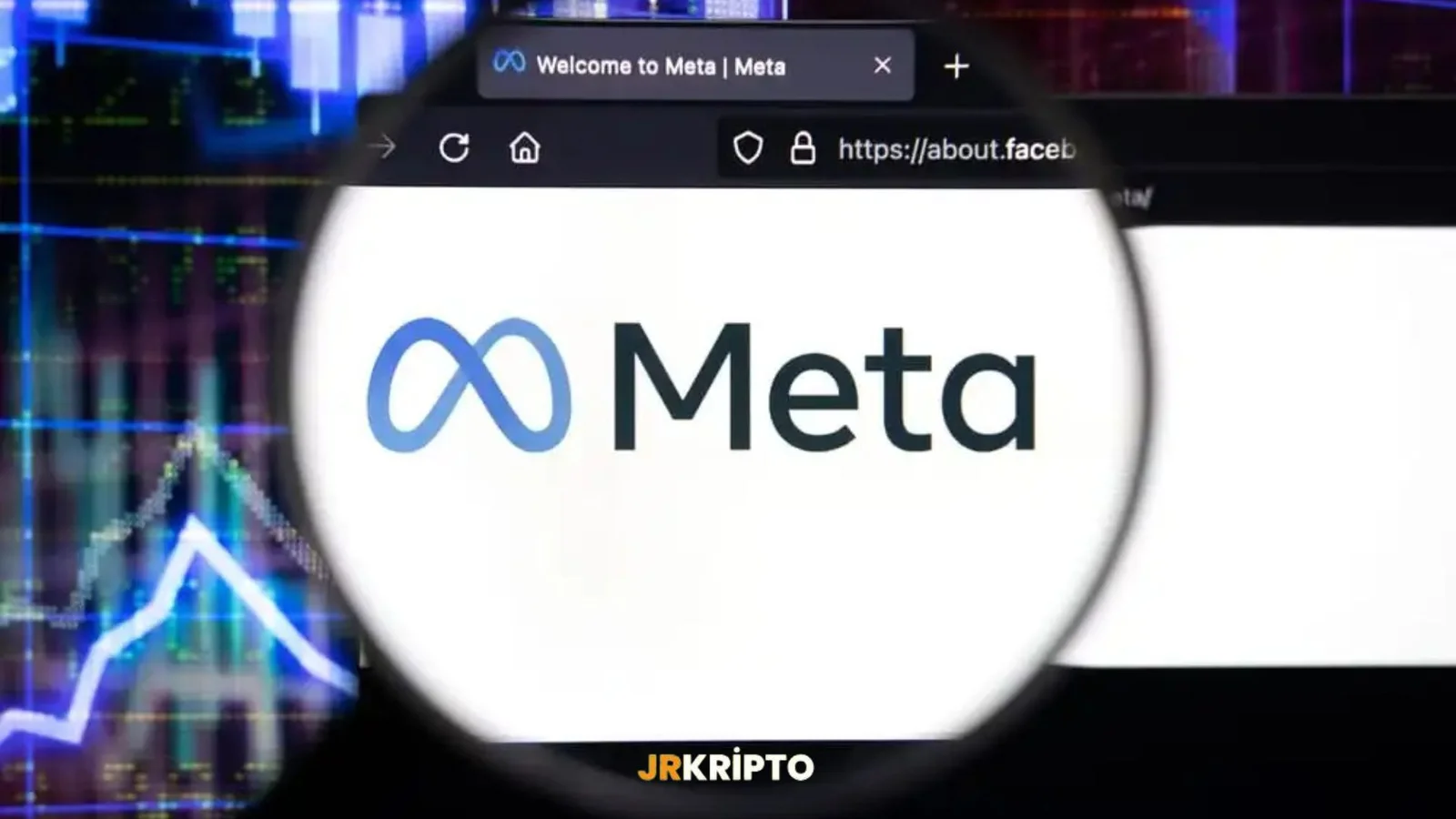News
Regulation News
Regulation News
Browse all Regulation related articles and news. The latest news, analysis, and insights on Regulation.
Americans Are Turning to Bitcoin: The Traditional Understanding of Investment Is Changing
Investment behavior in the United States is undergoing a fundamental transformation. Recent studies reveal that public interest in Bitcoin has surpassed that of gold. This shift affects not only individual investors but also national reserve policies. The growing acceptance of digital assets at both institutional and strategic levels is reinforcing the U.S.’s leadership in the crypto era. Bitcoin Is Becoming America's Reserve Asset Bitcoin Surpasses GoldAccording to a comprehensive survey conducted by The Nakamoto Project, 80% of Americans support converting a portion of the country’s gold reserves into Bitcoin. In this poll of 3,345 participants, the proposed median conversion rate was 10%, though some respondents supported rates as high as 20%. When broken down by age group, individuals aged 26–30 were the most supportive of the shift, followed by those under 26 and those aged 31–35. This indicates growing confidence and interest in digital assets among younger generations.The numbers back this up: approximately 50 million Americans own Bitcoin, compared to around 36–37 million who own gold. This data shows that Bitcoin has evolved beyond being merely an alternative investment—it has become a serious competitor to traditional stores of value.National Reserves and Institutional StrengthThe U.S. government has not remained indifferent to this societal shift. In 2025, President Donald Trump signed an executive order to establish a “Strategic Bitcoin Reserve,” which is planned to be backed by approximately 207,189 BTC. Additionally, a legislative proposal introduced by Senator Cynthia Lummis outlines a plan for the U.S. to acquire 1 million BTC over the next five years.On the institutional side, a similar trend is emerging. BlackRock’s iShares Bitcoin Trust (IBIT), with $33.2 billion in assets under management, has surpassed the iShares Gold Trust (IAU), strengthening the positioning of digital assets over gold. According to data from blockchain firm River, Americans hold 40% of the global Bitcoin supply, equating to a value of approximately $790 billion. Moreover, U.S.-based publicly traded companies account for 94.8% of corporate Bitcoin holdings.The Bitcoin Potential of U.S. Gold ReservesThe official U.S. gold reserve stands at 8,133 metric tons. However, this reserve is still valued based on the 1973 fixed price of $42 per ounce, which pegs the total value at just $11 billion. In contrast, using the current market price of $3,200 per ounce, the actual value exceeds $834 billion. The $820 billion gap between these two figures theoretically represents a massive potential for Bitcoin investment.Is Bitcoin the New Generation Reserve Asset?This intense interest in Bitcoin reflects not only a shift in individual investment preferences, but also the emergence of digital assets as components of national economic strategies. The growing confidence of both the American public and policymakers in Bitcoin suggests that digital assets will play a more central role in the global financial system in the years to come.Challenging the traditional gold standard, Bitcoin is steadily progressing toward becoming the reserve asset of the future—for both new-generation investors and institutional decision-makers.
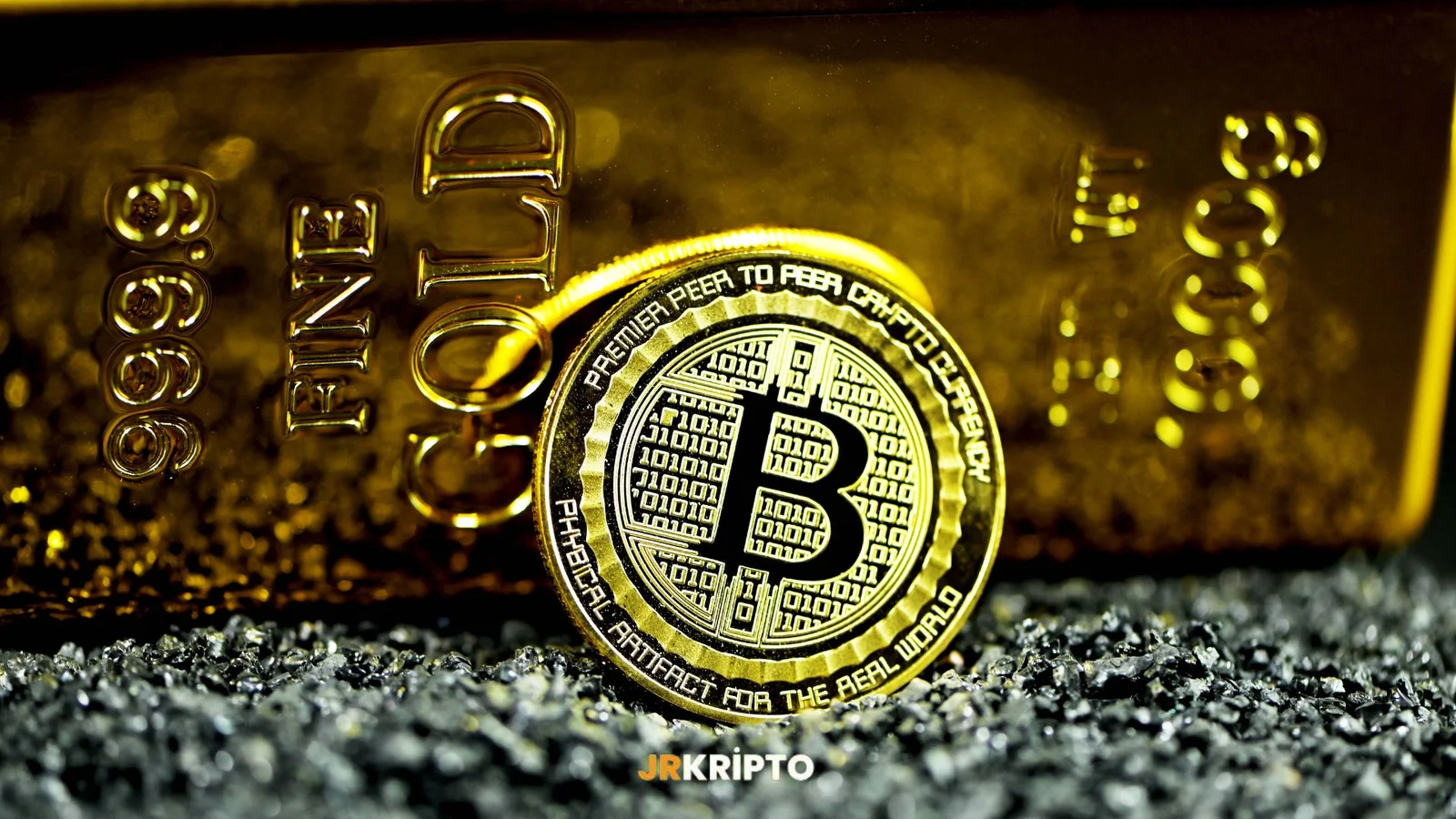
The US Is Entering a New Era in Stablecoin Regulations: A Clear Message from Bessent
U.S. Treasury Secretary Scott Bessent, in his latest remarks on digital assets, emphasized that the country is taking a “major step forward” in this area. In an interview with Bloomberg, Bessent stated that stablecoin regulations are only the beginning. The vision of the new administration is to build a digital economy that encourages financial innovationwhile being supported by strong oversight and compliance frameworks.Digital Assets and a New Regulatory ApproachAccording to Bessent, the Trump administration has made digital assets a strategic priority. He noted that previous administrations had pursued a “destructive” policy toward crypto companies, whereas the current administration is adopting a more constructive approach. This approach centers around a vision that emphasizes anti-money laundering (AML) efforts and regulatory clarity.The GENIUS Act: A New Foundation for RegulationThe most critical legislative proposal on the agenda, the GENIUS Act, imposes strict transparency and reserve requirements on stablecoin issuers. Under this law:Stablecoin issuers must disclose their reserves.Full reserve backing will be mandatory.Federal and state regulators will set standards for liquidity, risk, and capital.Bessent stresses that this legislation is only a starting point. According to him, it will position the U.S. as a global leader in digital assets and further strengthen the dominance of the dollar.How Do Stablecoins Impact U.S. Treasury Bonds?Another key point raised by Bessent is the potential impact of stablecoins on U.S. Treasury bonds. He forecasts that these digital assets could drive demand for Treasuries to as high as $2 trillion in the near future. This could reduce borrowing costs and reinforce the global influence of the dollar.“The Greatest Financial Opportunity of This Generation”Bessent warned that if the U.S. fails to act swiftly on digital assets, stablecoins may end up being regulated inconsistently at the state level, which could undermine investor confidence and limit the sector’s growth. He described the GENIUS Act as “one of the greatest financial opportunities of this generation.”

Kraken Announces XSTOCKS For 24/7 Stock Trading
Kraken is launching a major innovation that brings together digital assets and traditional stocks. The exchange has announced a new system called xStocks, which will enable 24/7 trading of more than 50 tokenized stocks and ETFs, including financial giants like Apple, Tesla, NVIDIA, and SPDR S&P 500 ETF (SPY).What is xStocks and How Does It Work?Kraken’s new product line, branded as “xStocks,” operates on the Solana blockchain. Each xStock token is a 1:1 digital representation of a real stock or ETF. These tokens are supported by Backed Finance, a Swiss-based entity, and are directly collateralized with the corresponding underlying assets. In practice:If the real stock is priced at $200, the xStock token will hold the same value.Investors will be able to redeem these tokens for cash.The main advantage of xStocks is their continuous trading feature—they can be traded even when traditional stock markets are closed. This provides significant flexibility for investors across different continents.Available Everywhere Except the U.S. (For Now)Kraken will initially launch xStocks in Europe, Asia, Africa, and Latin America. Due to regulatory barriers, U.S. users will not have access to these services for now. However, the company emphasizes that it is in active discussions with global regulatory bodies to ensure compliance in the long term.With this approach, Kraken aims to overcome the legal challenges faced by similar tokenized stock projects in the past.24/7 Stock Trading: What Does It Mean?Kraken’s initiative could change the rules of the game not just for crypto enthusiasts, but also for stock market investors. With xStocks, users can:Trade outside of regular market hours,Buy and sell without being tied to the traditional exchange system,Hold shares like Apple or Tesla directly in their digital wallets.Thanks to potential integration with DeFi applications, these tokens may also be used as collateral for borrowing or to generate passive income, enabling new financial scenarios.A New Era in the Global Financial SystemKraken’s tokenized stock initiative further blurs the line between crypto and traditional finance. The partnership with Backed Finance provides confidence by ensuring each token is backed by a real-world asset. The use of Solana blockchain guarantees low transaction fees and high speed.In the future, xStocks may also support cross-chain compatibility with Ethereum or other networks. This would expand both the accessibility and usability of the product even further.
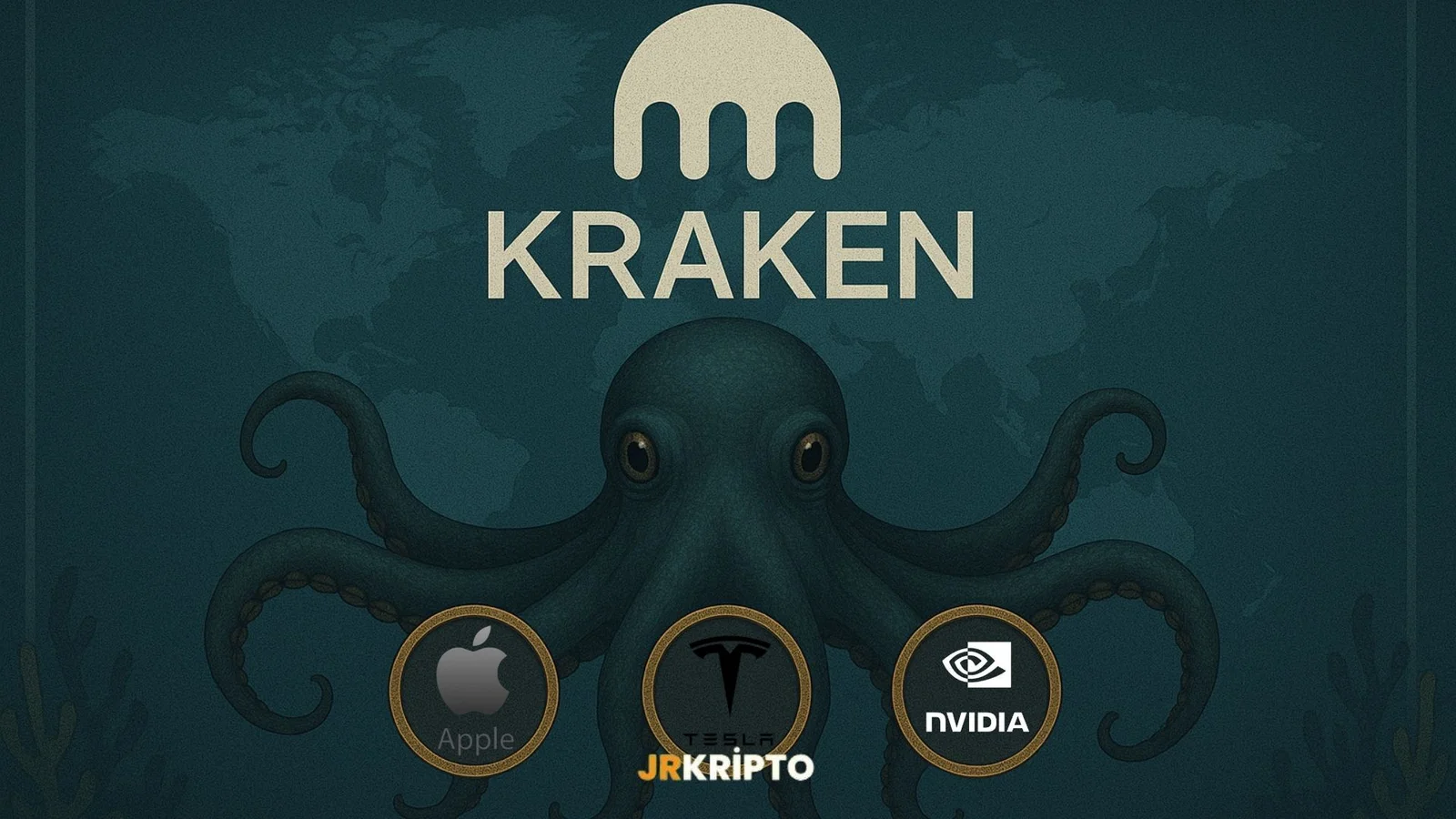
FIFA Is Building Its Own Blockchain Network: The Digital Future of Football Is on Avalanche
FIFA has taken a significant step to expand its presence in the digital world. The organization announced that it will establish its own dedicated blockchain network built on the Avalanche infrastructure. This network will be called “FIFA Blockchain” and is specifically designed to bring fan engagement into the digital space.Why Avalanche?Behind FIFA’s choice lies Avalanche’s technical advantages—its speed, scalability, and low transaction costs. Moreover, the technology allows the creation of custom subnets, enabling institutions like FIFA to operate on a blockchain where they can set their own rules.Thanks to this new network, fans will be able to access digital collectibles, interact through NFTs, and perhaps even participate in gamified systems in the future. This isn’t just a technological update—it’s a transformation that could completely change how football fans experience the game digitally.The Algorand Era Is Over, A New Phase BeginsFIFA is no stranger to the Web3 world. In 2022, it introduced its first NFT collections through a partnership with Algorand. However, this collaboration ended in 2024. Since then, FIFA has decided to move forward with Avalanche. The former NFT platform, “FIFA Collect,” will now be restructured on the Avalanche network.This transition shows that FIFA is moving beyond NFTs, aiming to build a broader digital strategy.Who’s Behind the Project?The technical infrastructure is being developed by Modex, a team experienced in Web3 projects. The project is coordinated with support from Ava Labs, the developer of Avalanche. According to the announcement, the network will not just serve as an NFT platform. The goal is to offer fans a faster, more secure, and highly interactive digital environment.From Spectators to ParticipantsWith this move, FIFA aims to transform fans from mere spectators into active participants who own and interact with digital content. NFT-based memorabilia, digital product trading, interactive games—these are all now on FIFA’s agenda.Not all the projects have been revealed yet, but the infrastructure is ready to build upon this ambitious vision.Final WordFIFA’s collaboration with Avalanche marks a new chapter in the use of blockchain technology in the sports world. This is not just a tech choice—it’s a powerful step toward the digital future of football.If a global giant like football is moving in this direction, it’s inevitable that other sports organizations will follow. In the near future, the “digital playing field” may become much more crowded.

Daily Market Summary with JrKripto 22 May 2025
You can find today’s edition of “Daily Market with JrKripto”, where we compile the most important developments in global and local markets, below. Let’s analyze general market conditions together and review the latest insights.Bitcoin (BTC) is currently trading at $110,600. The long-term uptrend that began at $75,930 gained momentum after breaking through the $101,059 and $104,000 resistance levels, and as of today, BTC has reached $111,880, setting a new all-time high (ATH). The slight pullback following this new peak can be seen as a natural profit-taking movement. If the upward momentum continues, potential resistance levels to watch are $114,500 and $118,300. In downward corrections, the first support is at $108,000; below that, $104,629 and $101,059 stand out as key support zones. Maintaining stability above $108,000 is critical for BTC to sustain its bullish trend.Ethereum (ETH) is currently trading at $2,665. The strong rally from $1,486 has accelerated with the breakout of the $2,453 and $2,595 resistance levels. With current pricing, ETH’s next potential targets are $2,800 and $2,981. In possible correction scenarios, the first support level will be $2,595. If this level breaks, $2,453 and $2,095 are the next support areas to watch. To maintain upward momentum, ETH needs to hold above $2,595.Crypto NewsBinance to list World Liberty Financial USD (USD1)Senator Cynthia Lummis said Americans are ready to update U.S. gold reserves with BitcoinSEC approved in-kind redemptions for BlackRock's Spot Ethereum ETFThe Texas House of Representatives officially passed the Strategic Bitcoin Reserve Act SB21WLD raised $135 million from Andreessen Horowitz and Bain Capital Crypto to fund network expansionBitcoin breaks its all-time high with a new recordTether minted $2 billion USDTTop Gainers:SPX → Up 25.1%, now at $0.92172304DOG → Up 24.8%, now at $0.00452217FARTCOIN → Up 21.0%, now at $1.56WIF → Up 20.6%, now at $1.16POPCAT → Up 19.8%, now at $0.53627774Top Losers:OM → Down 3.2%, now at $0.4199871KAITO → Down 2.3%, now at $2.10FRAX → Down 1.8%, now at $3.65DEXE → Down 1.1%, now at $12.61BTSE → Down 0.5%, now at $1.51Fear & Greed Index:Bitcoin: 71 (Greed)Ethereum: 60 (Greed)Dominance:Bitcoin: 64.21% ▼ 0.13%Ethereum: 9.16% ▲ 0.81%Daily Total Net ETF InflowsBTC ETFs: $607.10 millionETH ETFs: $1 millionGlobal MarketsConcerns over tax cuts in the U.S. and the resulting budget deficit led to weak demand in the bond market and selling pressure in equity markets. Particularly, the weak demand for the 20-year U.S. Treasury auction caused a sharp increase in yields. While these budget concerns create short-term pressure, a potential corporate tax cut in the future could support U.S. equities.U.S. stock indexes started the day lower, attempted to recover during the session, but fell again after the Treasury auction and ended the day with losses. The 20-year bond yield came in at 5.04%. The 2-year yield rose by 5 basis points, climbing above 4.00%, while 10- and 20-year yields rose by 11 basis points.As a result:S&P 500 fell 1.61%Dow Jones fell 1.91%Nasdaq fell 1.41%10 of the 11 major sectors in the S&P 500 closed negative. The only sector in the green was telecommunications, with a 0.67% gain. The steepest losses were in real estate (-2.63%), healthcare (-2.37%), financials (-2.05%), and infrastructure (-1.91%).Today’s economic data includes:S&P Global PMIHome sales data10-year TIPS (inflation-indexed bonds) auctionU.S. index futures are showing a flat trend in early hours, while European futures and Asian markets display a selling bias. European markets are also expected to start the day weak.Top Companies and Stock PricesMicrosoft (MSFT) → $3.36T market cap, stock price $452.57, ▼ 1.22%NVIDIA (NVDA) → $3.21T market cap, stock price $131.80, ▼ 1.92%Apple (AAPL) → $3.02T market cap, stock price $202.09, ▼ 2.31%Amazon (AMZN) → $2.14T market cap, stock price $201.12, ▼ 1.45%Alphabet (GOOG) → $2.05T market cap, stock price $170.06, ▲ 2.87%Borsa IstanbulThe BIST 100 index failed to break through the 9750–9800 resistance range for four consecutive days last week and fell slightly below 9400 amid continued capital outflows. Short-term indicators show weakening momentum, and the weak outlook in global markets is adding pressure on BIST.In this context, the 9200–9250 range is the first key support zone. On the upside, 9500 is the critical resistance.Following weak Q1 2025 earnings, analysts revised their BIST 100 target price downward. The new 12-month target average is around 13,800, implying a 47% potential return. However, the lack of strong catalysts to realize this potential reinforces the view that “a stock market that can’t rise, falls,” bringing the 9000–9100 zone back into focus.Today, attention in Türkiye is on the CBRT’s second Inflation Report of the year. In February, the central bank raised its 2025 year-end inflation forecast from 21% to 24%, while maintaining the 2026 forecast at 12%. The report will be released at 10:30 AM. Key data releases today also include:Manufacturing capacity utilization rateReal sector confidence indexSectoral confidence indicesMeanwhile, the Treasury has authorized Bank of America, BNP Paribas, HSBC, and Morgan Stanley for a new 2032 dollar-denominated bond issuance abroad. According to Bloomberg, the issue totals $2 billion with a yield of 7.45%. This brings the total international issuance for the year to $4.5 billion.Yesterday, the BIST 100 dropped for the second day in a row, closing down 1.2% at 9398 points. It is still up 3.5% for the month but down 4.4% year-to-date. Energy and REIT stocks slightly outperformed, while Turkish Airlines, Pegasus, Koç Holding, and Ereğli weighed on the index. Retail stocks also saw continued selling pressure.Technically, the close below 9475 signals continued weakness. Immediate support levels are at 9331–9233, with stronger support at 9148–9044. If the downward move persists, 8984 will be the next level to watch. On the upside, a close above 9475 is needed for recovery. Key resistance levels are:9475, 9740–9760, 9895, and 9953.A stabilization attempt may be seen today after two days of decline.Top Companies by Market Cap on Borsa IstanbulQNB Finansbank (QNBTR) → ₺893.61B market cap, ₺265.00 per share, ▼ 0.66%Aselsan (ASELS) → ₺606.48B market cap, ₺131.60 per share, ▼ 1.05%Garanti Bank (GARAN) → ₺467.04B market cap, ₺113.50 per share, ▲ 2.07%Turkish Airlines (THYAO) → ₺386.06B market cap, ₺280.25 per share, ▲ 0.18%Koç Holding (KCHOL) → ₺383.93B market cap, ₺150.50 per share, ▼ 0.59%Precious Metals & Exchange RatesGold: ₺4172Silver: ₺41.52Platinum: ₺1337USD/TRY: ₺38.83EUR/TRY: ₺44.04See you again tomorrow with the latest updates!

Historic Bitcoin Move from Texas: Strategic Reserve Act Passed
One of the largest states in the U.S., Texas, has taken a historic step in the field of digital assets. On May 21, 2025, the Texas House of Representatives passed the “Strategic Bitcoin Reserve and Investment Act” (SB21) by a vote of 101 to 42. This legislation provides a legal basis for the state of Texas to invest public funds in Bitcoin and to add BTC to its official reserves.The bill now awaits the signature of Texas Governor Greg Abbott. The governor may either sign or veto it. However, if no action is taken, the bill will automatically become law within 20 days.Bitcoin Becomes an Official Reserve Asset for TexasWith SB21, Texas will be able to use surplus general revenue to purchase Bitcoin. These purchases will be held in a special fund, established independently from the state treasury, and stored using high-security methods such as cold storage.The law also introduces transparency and reporting requirements, similar to those imposed on gold held in the Texas Bullion Depository. Each quarter, the dates, quantities, and costs of Bitcoin purchases will be disclosed to the public.While the legislation doesn’t specify a dollar limit, it states that the funds can only be held in jurisdictions where Bitcoin is legally recognized as property. This clause provides an important regulatory safeguard.Emphasis on Financial Sovereignty and the Digital FutureOne of the bill’s main sponsors, Representative Giovanni Capriglione, said the following in his pre-vote speech:“Today’s action shows Texas’ commitment to becoming a leader in the digital age. We are now embracing Bitcoin—a modern, borderless store of value—instead of traditional gold.”This law is not just an investment move; it is also part of Texas’ broader vision of financial sovereignty. The bill emphasizes that Bitcoin can serve as a hedge against inflation and economic volatility.Additionally, the state auditor is tasked with researching revenue potential related to state fees through the Lightning Network. This means Bitcoin is being evaluated not just as an investment asset, but also as a payment infrastructure.Texas Becomes the Third State to Establish a Bitcoin ReserveWith this law, Texas becomes the third U.S. state, after Arizona and New Hampshire, to direct public assets toward Bitcoin as part of a strategic reserve. As Senator Charles Schwertner pointed out, this initiative could increase Texas’ monetary flexibility and provide a buffer against financial shocks.Key Highlights of the Law:The state can purchase Bitcoin using surplus general revenueBTC will be stored in a special reserve fundAll transactions will be transparently reportedThe Lightning Network’s revenue potential will be examinedReserve assets can only be held in jurisdictions with legal recognition of BitcoinTexas’ SB21 bill marks a major milestone in the official recognition of cryptocurrencies as state-level financial instruments. The fact that Bitcoin is now being considered not just as an investment but as a strategic reserve asset may represent a shift that transforms not only the crypto market, but also the financial system as a whole.All eyes are now on Governor Greg Abbott and what decision he will make in the coming days. But one thing is already clear: U.S. states are lining up for Bitcoin.
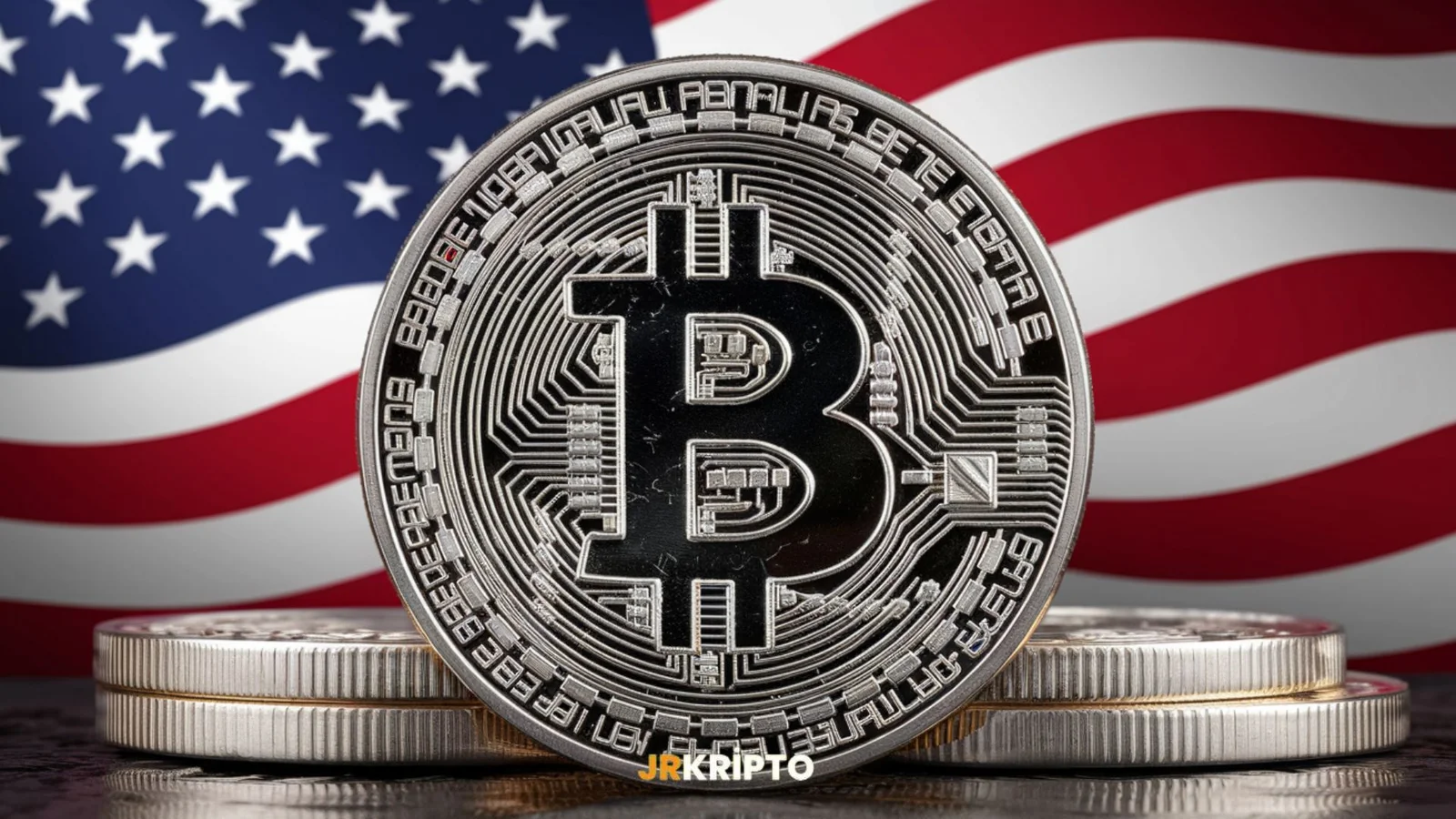
Crypto Message from the Supreme Court of India: Regulation is Necessary, Not Banned
The Supreme Court of India has made a significant statement regarding the country’s stance on cryptocurrencies. The Court emphasized that an outright ban on digital assets is unrealistic, and instead stressed the need for a clear and effective legal framework. Justice Surya Kant stated that the government has fallen short in regulating the sector, which poses serious economic risks.This assessment from the Supreme Court serves as a clear warning against the longstanding regulatory uncertainty surrounding crypto in India. One of the main issues highlighted by the judiciary is the fact that this sector, which has been primarily controlled through taxation policies, still lacks a proper legal foundation.“You Tax It But Don’t Regulate It”Justice Kant pointed out the 30% tax imposed on crypto gains and criticized the contradiction of the government profiting from a sector it fails to regulate. He stated that cryptocurrencies are currently creating a sort of “parallel economy” in the country, which could have dangerous implications for the broader economy.Speaking during an ongoing case related to Bitcoin transactions, Justice Kant emphasized the following:Key Issues Raised by the Supreme Court:The government collects taxes from crypto income but fails to establish a legal regulatory framework.The uncontrolled growth of cryptocurrencies increases the risks of money laundering and tax evasion.A complete ban is not a viable solution, as it is technologically difficult to enforce and practically ineffective.The government previously stated it would publish a consultation paper, but this has yet to be released to the public.The current uncertainty creates a risky environment for both investors and companies in terms of sustainability.Government Signals Possible ReviewIn response to the Court’s criticism, India’s Additional Solicitor General—representing the government—hinted that the current policies could be reviewed. Responding with the words, “We will take instructions, sir,” the Solicitor General indicated that India’s crypto policy may be reconsidered.This dialogue suggests that the Indian government may soon be compelled to take more concrete steps on cryptocurrency regulation and may signal the introduction of a new regulatory framework to be presented to the public.
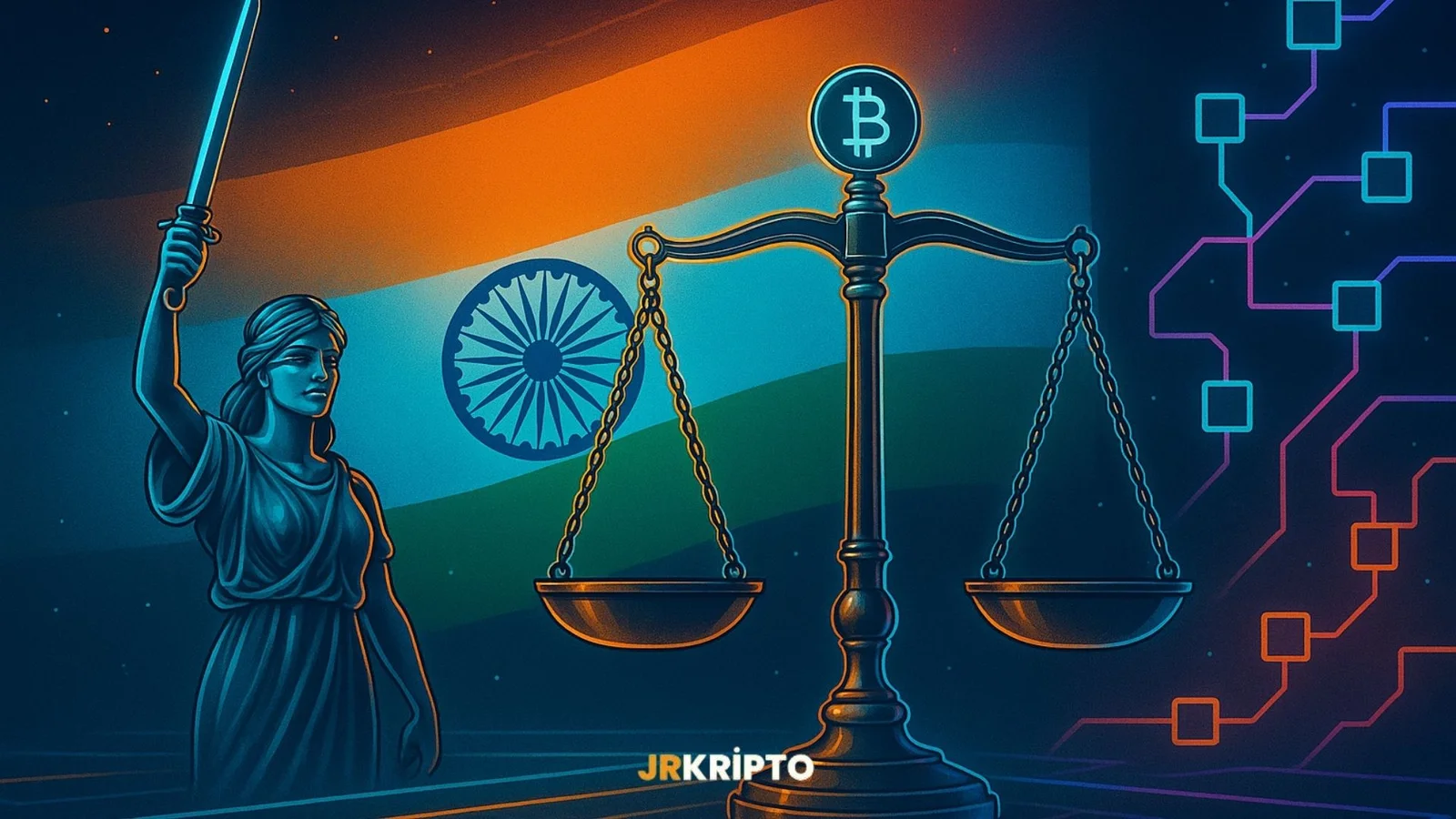
Cryptocurrency Move from the Central Bank of Russia: Restrictions Are Lifted
The Central Bank of Russia is preparing to ease restrictions on financial products tied to Bitcoin and other cryptocurrencies. This decision signals a significant policy shift in the country’s crypto regulations. Russia’s move toward a more flexible stance on cryptocurrencies is especially notable amid a period of intensified international sanctions.Crypto Exchange Exclusive to “Qualified” InvestorsA new plan, jointly developed by the Central Bank of Russia and the Ministry of Finance, envisions the establishment of a crypto exchange accessible only to high-net-worth individuals who meet certain criteria. This exchange will operate under an “Experimental Legal Regime” (ELR) and will only be available to investors who either:Have an annual income exceeding 50 million rubles (approximately $600,000), orPossess assets worth over 100 million rubles (around $1.2 million).This step indicates that the government aims to promote institutional-level crypto adoption without relinquishing control, rather than granting broad freedoms to retail investors.Selective Approach to StablecoinsThe new regulations may also impose restrictions on the trade of certain stablecoins, such as Tether (USDT). There is ongoing discussion about banning assets issued by entities based in “hostile countries”, especially those that carry a risk of being frozen or blocked. This demonstrates Russia’s intention to incorporate geopolitical risk assessments into its crypto regulations and its cautious stance toward products issued by U.S.-based companies.Crypto Expansion in International TradeRussia aims to utilize cryptocurrencies not just as investment tools but also as a way to bypass sanctions and to create alternative payment channels in international trade. This aligns with the country’s strategic goal of reducing its dependence on the dollar-based system. However, experts emphasize that this approach still raises serious concerns in terms of sustainability and regulatory transparency.
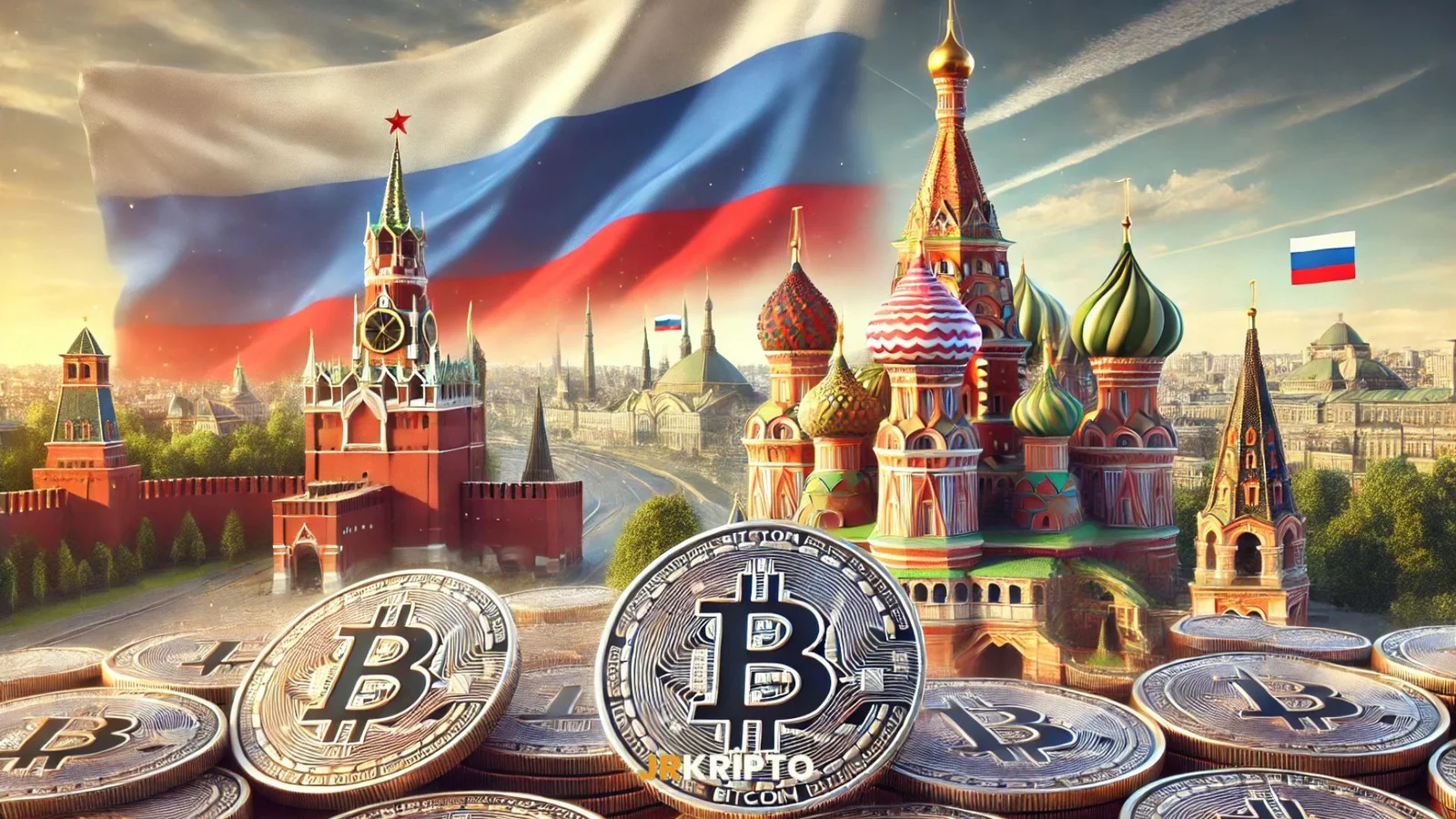
Ondo Finance Launches 24/7 Conversion Service with PYUSD
Ondo Finance has launched a 24/7 instant conversion service between PayPal’s stablecoin PYUSD and its own tokenized U.S. Treasury bond representative, OUSG. This development eliminates the time restrictions encountered in traditional financial transactions while providing easier access to digital assets.Instant and Seamless Transition Between OUSG and PYUSDThanks to the system announced by Ondo, investors will be able to create OUSG tokens using PYUSD at any time or convert their existing OUSG holdings into PYUSD. This conversion service, active 24 hours a day, 7 days a week, currently stands out as the largest stablecoin-to-Treasury fund bridge with a capacity of $25 million.Ondo Finance CEO Nathan Allman stated, “The ability to instantly convert OUSG into PYUSD provides our clients with a high-quality liquidity option.” He also added that they are pleased to expand their collaboration with PayPal in this area.Next-Gen Liquidity Infrastructure: Ondo NexusThis service is also part of Ondo’s new platform called Nexus. Nexus allows tokenized U.S. Treasury bonds to be redeemed by third parties using stablecoins. With the PYUSD integration, this system makes real-world assets more liquid and accessible in digital systems.OUSG currently attracts attention with a total value locked exceeding $525 million. Offering daily interest yield, OUSG is supported on Ethereum and Solana networks. The funds are directed to leading institutions such as BlackRock, Franklin Templeton, WisdomTree, and FundBridge Capital.A New Bridge Between Traditional Finance and CryptoThe 24/7 instant conversion between PYUSD and OUSG is not just a technical innovation; it also represents a new bridge between the digital and traditional financial worlds. The instant liquidity makes investor decisions faster and more efficient, while also enabling stablecoins to be used in new areas.

FTX will Pay $5 Billion to Creditors on May 30
The crypto exchange FTX has reached a significant milestone in its post-bankruptcy recovery process. The company announced that, as of May 30, 2025, it will make cash payments exceeding $5 billion to its creditors. This payment will be the second major distribution phase of the recovery process.Second Round of Repayments BeginsIn the process managed by the FTX Recovery Trust, users who have previously completed the required steps will receive their payments through their chosen distribution service providers, such as BitGo or Kraken. Distributions will begin on May 30 and are generally expected to be completed within 1–3 business days.FTX will prioritize requests of $50,000 and above in these payments. In the first round of payments made earlier, $800 million had been distributed for claims under $50,000. Now, an additional $400 million has been allocated for these users, and this distribution will take place later in the year.Market Impact ExpectedAll repayments will be made in cash. However, a significant portion of users who remained in crypto during FTX’s collapse are expected to convert this cash back into cryptocurrencies. Especially the bullish expectations for the second half of the year may trigger this shift.Analysts believe that such a large cash inflow into the market could have a buying pressure effect in the spot market. A large number of investors harmed by the FTX collapse may tend to recover their losses through crypto.Total Expected Repayment Could Reach $16 BillionAccording to estimates, FTX’s total bankruptcy estate is between $14.7 and $16.5 billion. The company predicts that 98% of eligible creditors will receive at least 118% of their original claims back in cash.On the other hand, users who do not verify their claims through official portals by June 1 face the risk of losing their right to this distribution. FTX has issued a warning to users in this regard.FTX Repayment Process – Quick NotesPayment date: May 30, 2025Total amount to be paid: $5 billionPriority groups: Claims of $50,000 and aboveDistribution providers: BitGo and KrakenDelivery time: 1–3 business daysCompliance process deadline: June 1, 2025
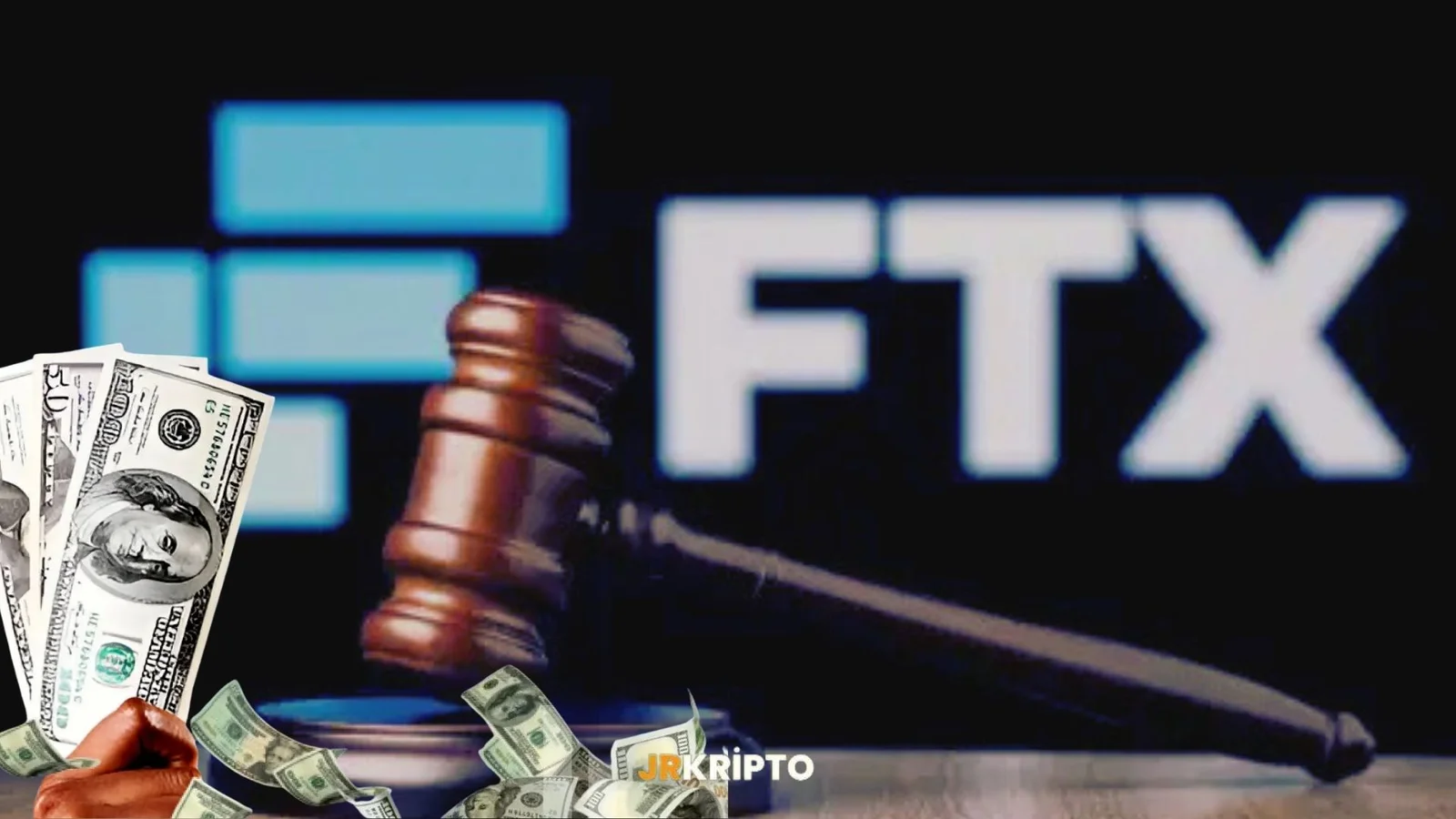
Daily Market Summary with JrKripto 14 May 2025
You can find today’s “Daily Market with JrKripto,” where we compiled the most important developments in global and local markets, below. Let’s analyze the general market conditions together and take a look at the latest evaluations.Bitcoin (BTC) is currently trading at $103,170. The strong upward trend that started from the $75,930 level gained momentum after surpassing the $101,059 and $104,000 resistance levels. However, with the price pulling back from the $104,629 level, a short-term correction movement is being observed. During this process, the $101,059 level stands out as the first significant support. If this level is maintained, the upward trend may gain momentum again, and if the $104,629 resistance is broken, the targets of $108,000 – $109,850 may come back into focus. Otherwise, the $96,115 and $94,570 levels will be followed as support levels in downward movements.Ethereum (ETH), on the other hand, is trading at the $2,600 level. With the effect of the upward movement that started from the $1,486 level, the $2,453 resistance was broken, and the price rose up to the $2,550 level. However, with some profit-taking at this point, the price has pulled back slightly. Currently, the $2,453 level is being tested as support. If it can remain above this level, the $2,595 and $2,981 resistance levels may once again become targets. However, if it drops below $2,453, the $2,095 and $1,790 levels should be followed as gradual support zones. Holding above $2,453 is critically important for the upward trend in ETH to continue.Crypto NewsTrump: I’m a big fan of crypto.SEC has accepted 21Shares’ spot DOGECOIN ETF application.SEC has postponed Grayscale’s Litecoin spot ETF application.Trump: What’s up with “Always Delayed Powell”? It’s not fair for an America that’s ready to bloom.Nvidia announced a “strategic partnership” with Humain to build artificial intelligence factories in Saudi Arabia.CryptocurrenciesTop Gainers:GRASS → increased by 32.5% to $2.14ETHFI → increased by 30.3% to $1.35TDCCP → increased by 30.1% to $0.41883782RAY → increased by 19.4% to $3.78SYRUP → increased by 17.3% to $0.30284282Top Losers:MOODENG → decreased by 10.9% to $0.27000123KAITO → decreased by 8.3% to $1.87PNUT → decreased by 4.5% to $0.41688071DEXE → decreased by 3.9% to $12.31MOG → decreased by 3.8% to $0.00000107Fear Index:Bitcoin: 71 (Greed)Ethereum: 58 (Greed)Dominance:Bitcoin: 62.07% ▼ 0.18%Ethereum: 9.72% ▼ 0.05%Daily Total Net ETF InflowsBTC ETFs: -$91.40 MillionETH ETFs: $13.50 MillionGlobal MarketsInflation data released in the U.S. in April came in below expectations, and with this development, the positive news from U.S. President Donald Trump’s investment talks with Gulf countries led to positive closings in the stock markets.According to the released CPI data, headline inflation came in at 0.2% monthly, below the expected 0.3%. Annual inflation also came in at 2.3%, below the market expectation of 2.4%. This marked the lowest level seen since February 2021. Core inflation, which excludes food and energy, remained in line with expectations at 2.8% annually, while it was 0.2% monthly, below the 0.3% forecast.The slowdown in service inflation continued, but the price increases in housing and rent items remained strong. Additionally, decreases were observed in food, used car, and clothing prices. On a monthly basis, energy prices rose by 0.7%, healthcare services by 0.5%, and housing costs by 0.3%. In some items, price increases due to tariffs were also observed.In addition to the inflation data, investments announced during U.S. President Donald Trump’s meeting with Saudi Crown Prince Mohammed bin Salman also supported the markets. Trump announced that a total investment of $600 billion is being worked on between the two countries. As part of this, a $142 billion arms deal was signed. Investment plans for data centers from tech giants like Nvidia, Amazon, and Google were also announced.With the impact of these developments, the Nasdaq Index rose by 1.61%, and the S&P 500 increased by 0.72%. However, the decline in shares of healthcare company United Health negatively affected the Dow Jones Index, which ended the day with a 0.64% loss.Today, markets will focus on the weekly crude oil inventory data. While Asian markets started the day on a positive note, European markets are expected to start the day flat.Most Valuable Companies and Stock PricesMicrosoft (MSFT) → $3.34T market cap, $449.14 per share, ▼ 0.03%Apple (AAPL) → $3.18T market cap, $212.93 per share, ▲ 1.02%NVIDIA (NVDA) → $3.17T market cap, $129.93 per share, ▲ 5.63%Amazon (AMZN) → $2.24T market cap, $211.37 per share, ▲ 1.31%Alphabet (GOOG) → $1.94T market cap, $160.89 per share, ▲ 0.82%Borsa IstanbulIn March, Turkey’s current account deficit came in at $4.1 billion, slightly above market expectations. The 12-month cumulative current account deficit remained steady at $12.6 billion, while excluding gold and energy, the current account surplus showed a limited increase of $0.3 billion compared to the previous month, reaching $51.6 billion. According to seasonally adjusted data, a limited improvement was observed in the general current account balance in March due to recovery in gold and energy balance. However, there was a monthly deterioration in the current account balance excluding gold and energy. This indicates that both upside and downside risks remain for year-end current account balance expectations.On Borsa Istanbul (BIST-100), after Monday’s strong rise, the index lost 0.5% on Tuesday due to profit-taking. Investors are focused on the expected Russia-Ukraine ceasefire talks in Istanbul on Thursday. The dollar-based value of BIST-100 is around the 250 level, about 15% below the March 2025 peak. Signs of recovery in inflation indicators and positive geopolitical developments could lay the groundwork for the index to move back toward its previous peaks. In this context, a flat performance is expected on BIST today.From a technical standpoint, the BIST100 index fell to the 9652 level at the start of the day yesterday, but closed the day at 9700 after buying interest. The 9475–9580 range is considered a key transition zone, and as long as it stays above this band, the upward expectation is thought to continue. If the index exceeds the 9740/9750 level, testing the 9895 resistance may come into play. In downward movements, the 9580–9475 band stands out as the first strong support region. If these levels are broken, the 9230, 9044, and 8870 levels will be followed as support. On the upside, the 9740/9750, 9895, and 9953 levels will be followed as resistance points.Most Valuable Companies on Borsa IstanbulQNB Finansbank (QNBTR) → ₺904.5 billion market cap, ₺279.50 per share, ▲ 3.52%Aselsan Electronic Industry (ASELS) → ₺623.81 billion market cap, ₺138.00 per share, ▲ 0.88%Garanti Bank (GARAN) → ₺460.74 billion market cap, ₺113.90 per share, ▲ 3.83%Turkish Airlines (THYAO) → ₺420.21 billion market cap, ₺300.75 per share, ▼ 1.23%ENKA Construction and Industry (ENKAI) → ₺404.47 billion market cap, ₺69.50 per share, ▲ 0.72%Precious Metals and Exchange RatesGold: ₺4,022Silver: ₺41.25Platinum: ₺1,242Dollar: ₺38.78Euro: ₺43.43Looking forward to meeting again tomorrow with the latest news!

Eric Adams“ "The Future of Crypto Will Be Written in New York”
At a press conference, New York City Mayor Eric Adams once again clearly stated his goal of making New York the "crypto capital of the world." This statement comes ahead of the New York City Crypto Summit, which will be held at Gracie Mansion on May 20, drawing renewed attention to the city's ambition to lead in digital assets.Financial Inclusion and Technological LeadershipAdams emphasized that New York has long been the financial capital of the world and expressed his intention to maintain this role in the future through blockchain and crypto technologies. Highlighting the potential of cryptocurrency technologies to provide financial inclusion for those without access to traditional banking systems, Adams also stressed the importance of considering the social impact of these technologies.Crypto Summit: Public and Private Sectors Come TogetherScheduled for May 20, the New York City Crypto Summit will bring together public officials and leading figures from the crypto ecosystem. With key participants such as Figure co-founder June Ou and Traction & Scale CEO Richie Hecker, the summit will serve as a platform for fostering public-private partnerships and innovative ideas.Emphasis on Balanced RegulationAdams pointed out that one of the most important issues facing the crypto industry is “balanced regulation.” Warning that overly harsh regulations could stifle innovation, he stated that policies should strike a balance between investor protection and innovation.Growing Crypto EcosystemRecalling that he received his first three paychecks in Bitcoin and Ethereum when he took office in 2022, Adams described this step as a symbol of the city's crypto vision. Today, New York has become a hub for leading crypto firms such as MoonPay, Coinbase, and Gemini.According to Adams, New York’s leadership in digital finance can only be achieved through a unified vision shared by the public and private sectors. The Crypto Summit will be one of the milestones supporting this vision with concrete steps.New York’s ambition to become the crypto capital is not merely symbolic, but the result of a strategy shaped collectively by the public, regulators, and the industry.
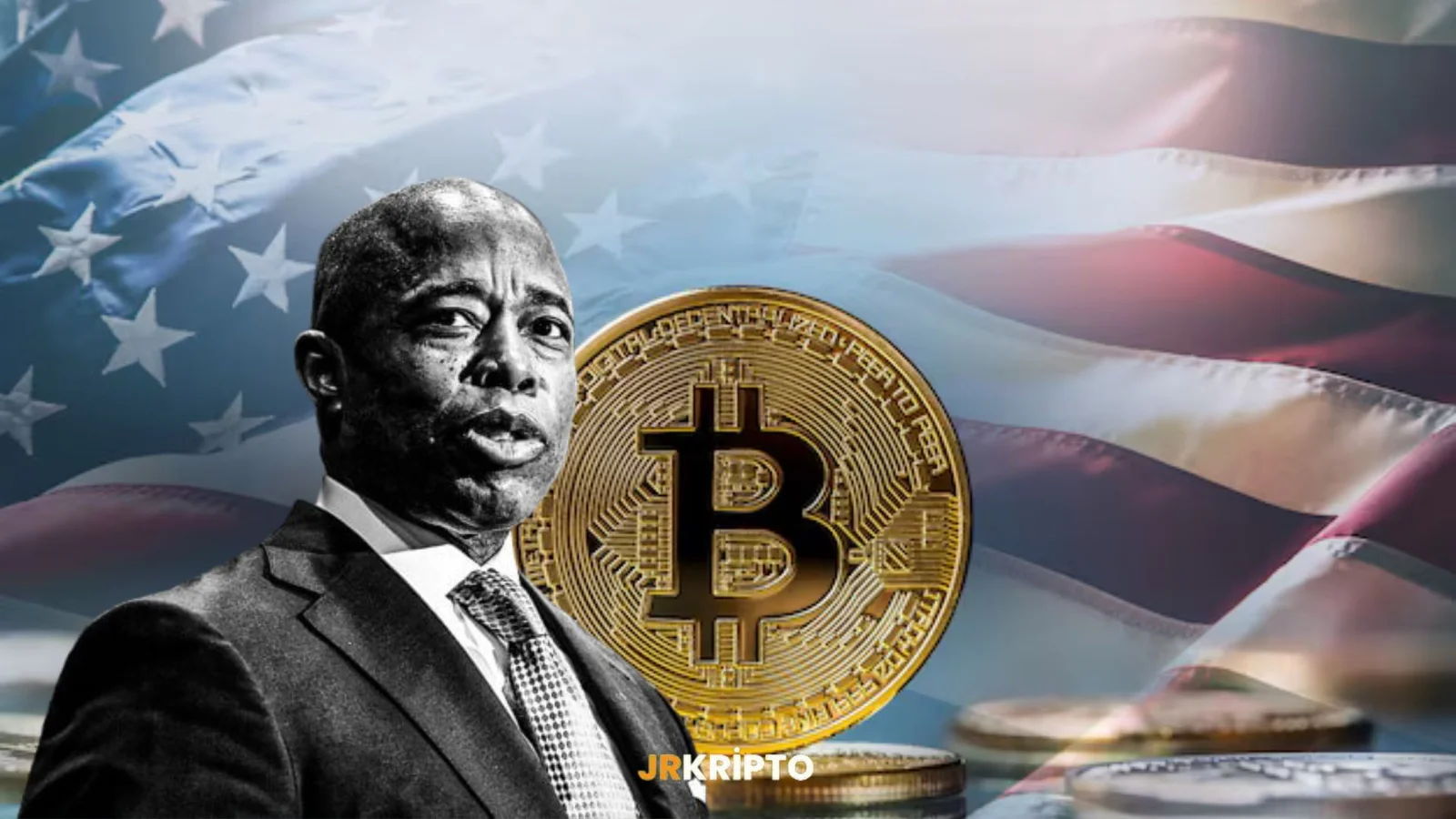
Coinbase Joins the S&P 500 Index: A Historic First in the Crypto Sector
Coinbase Global Inc. (NASDAQ: COIN), one of the leading cryptocurrency exchanges in the U.S., will officially join the S&P 500 index starting Monday, May 19, 2025.Coinbase will take the place of Discover Financial Services, which is being acquired by Capital One, thus earning the title of the first crypto-focused company to be included in this prestigious index.A Milestone in Crypto Finance HistoryCoinbase’s entry into the S&P 500 is being interpreted as a striking sign of legitimacy for the digital asset sector. CEO Brian Armstrong announced the development on social media platform X, saying:"Coinbase is now the first and only crypto company to join the S&P 500. These milestones show that crypto is here to stay."The S&P 500 is one of the world’s most widely followed stock indexes, tracking the performance of the 500 largest publicly traded companies in the U.S. To be included in this list, a company must be U.S.-based, have a minimum market capitalization of $15 billion, possess high liquidity, and report positive net income for the last four consecutive quarters. Coinbase has successfully met all of these criteria.Immediate Market ReactionCoinbase shares surged by as much as 11% following the announcement after the close of trading on Monday, May 12. The company reached a market capitalization of approximately $50.8 billion, drawing the attention of index funds and passive investment firms. Since ETFs and index funds that track the S&P 500 must automatically include these stocks in their portfolios, this creates an immediate demand for the shares.This move also reignited interest in the crypto industry among institutional investors. Coinbase’s inclusion in the index is seen as a signal that traditional financial circles no longer view crypto as a passing trend.Why Is This So Important?Increased Investment Demand: Index funds and ETFs will add COIN shares to their portfolios, potentially boosting demand and liquidity.Institutional Legitimacy: Crypto has taken another step toward becoming a mainstream investment vehicle.Signaling Effect: The inclusion of a player like Coinbase could open the door for other companies in the sector.Coinbase's inclusion in the S&P 500 marks a historic milestone not only for the company but for the entire cryptocurrency industry.
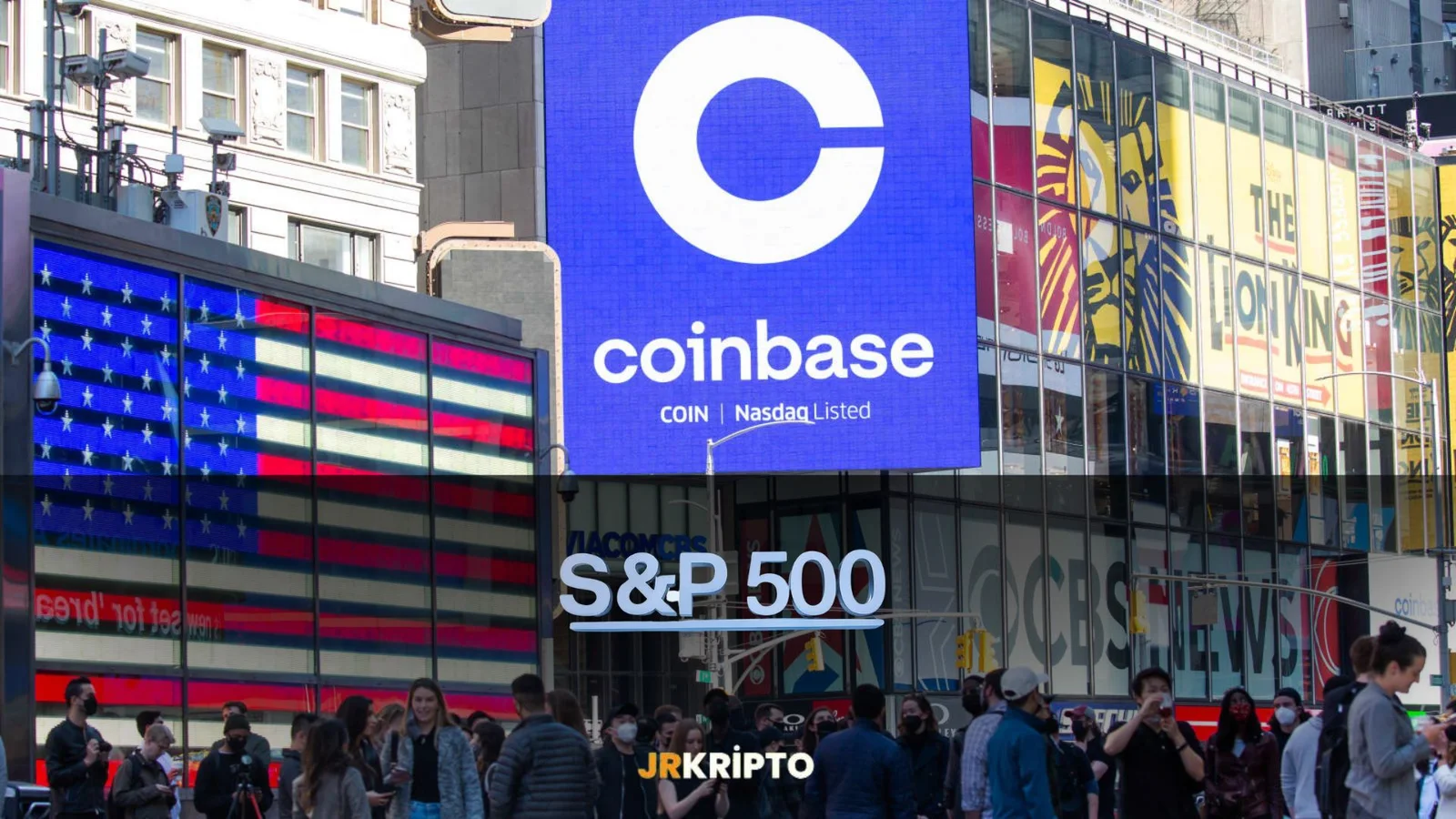
Daily Market Summary with JrKripto 11 May 2025
You can find today’s “Daily Market with JrKripto,” where we’ve compiled the most important developments in global and local markets, below. Let’s analyze the general market conditions together and take a look at the latest evaluations.Bitcoin (BTC) is currently trading at $104,300. Following a strong uptrend that started from the $75,930 level, BTC continued its rise by breaking through the $101,059 resistance and then the $104,000 level. If this upward move continues, the next potential targets are $108,000 and $109,850. However, in the event of short-term profit-taking, $101,059 should be monitored as the first support level. If BTC falls below this level, the $96,115 and $94,570 support zones could come into play. To maintain the strength of the trend, it is important for BTC to stay above $101,000.Ethereum (ETH), on the other hand, has risen to the $2,550 level. The strong rally that started from the $1,486 support has accelerated after surpassing the $2,453 resistance. If this uptrend continues, $2,595 and subsequently $2,981 could be the next resistance targets. In case of a potential correction, $2,453 has now become the first support level. If this level is breached, the $2,095 and $1,790 support levels may come back into focus. To sustain the positive outlook for ETH, holding above $2,453 is crucial.Crypto NewsTrump announced that he will sign an executive order to lower drug prices.China will reduce tariffs on U.S. goods from 125% to 10% for 90 days!The U.S. has reduced its tariffs on Chinese goods from 145% to 30%.Zelensky: I will wait for Putin in Turkey on Thursday.“I expect a full, permanent ceasefire starting tomorrow.”The White House stated that more trade deals might be announced this week.OpenAI is in talks with Microsoft for new funding and a potential future IPO.Top Gainers:MOODENG → Up 65.5% to $0.26478145PI → Up 56.8% to $1.54TOSHI → Up 36.8% to $0.00085043WIF → Up 36.5% to $1.22GOAT → Up 35.8% to $0.22228838Top Losers:SYRUP → Down 8.7% to $0.27339711DEXE → Down 5.5% to $13.23BORG → Down 5.0% to $0.24050204QGOLD → Down 3.2% to $3,221.53PAXG → Down 3.1% to $3,228.13Fear Index:Bitcoin: 70 (Greed)Ethereum: 60 (Greed)Dominance:Bitcoin: 62.93% ▼ 0.36%Ethereum: 9.22% ▼ 0.49%Daily Net ETF Inflows:BTC ETFs: $321.40 MillionETH ETFs: $17.60 MillionGlobal MarketsThis morning, global stock markets are trading positively amid optimism stemming from progress in U.S.-China trade negotiations and a ceasefire between Pakistan and India. Statements made after weekend talks between the U.S. and China indicate that the trade war, which has caused uncertainty in the markets since the beginning of the year, may be nearing resolution. U.S. President Donald Trump announced on social media that significant progress has been made between the two countries, which would benefit both sides. He also stated that drug prices would be reduced by between 30% and 80%.U.S. stock indices closed flat on the last trading day of the week (Friday), but futures are trading with strong buying interest this morning due to the positive tone of the talks. On the economic data front, the Consumer Price Index (CPI) for April, due on Tuesday, and the Producer Price Index (PPI), scheduled for Thursday, will be in focus. In corporate earnings, Cisco Systems on Wednesday and Walmart and Alibaba on Thursday will be watched closely. Geopolitically, the ceasefire between Pakistan and India has helped reduce regional risks. Asian markets have started the week positively, and European markets are also expected to open with strong gains. Overall, global markets are showing a positive trend this week thanks to growing trade optimism and easing geopolitical risks.Most Valuable Companies and Stock Prices:Microsoft (MSFT) → $3.26T market cap, $438.73 per share, up 0.13%Apple (AAPL) → $2.97T market cap, $198.53 per share, up 0.53%NVIDIA (NVDA) → $2.84T market cap, $116.65 per share, down 0.61%Amazon (AMZN) → $2.05T market cap, $193.06 per share, up 0.51%Alphabet (GOOG) → $1.86T market cap, $154.38 per share, down 0.88%Borsa IstanbulAccording to the Industrial Production Index (IPI) data released for March, seasonally and calendar-adjusted industrial production increased by 3.4% compared to the previous month. However, the unadjusted raw data showed a 2.7% year-on-year decline. The main reason for this decline is that March this year had 1.5 fewer working days compared to last year. Such calendar differences can lead to distortions in annual comparisons. In the calendar-adjusted annual data, industrial production increased by 2.5%, indicating notable monthly gains in some sectors, though this increase was not widespread across all sectors.Domestically, key data such as retail sales volume, turnover indices, and construction cost index will be announced today. Additionally, tomorrow, the Treasury will hold bond auctions indexed to TLREF (Turkish Lira Overnight Reference Rate) and CPI (Consumer Price Index), both with 4-year maturities. The current account balance, budget balance, and CBRT Market Participants Survey, which will be released this week, will also be closely monitored for insights into the economic outlook.The BIST-100 index ended last week with a 2.4% gain. As the new week begins, a positive outlook is forming, supported by diplomatic developments. In particular, the announcement of a meeting to be held in Istanbul on Thursday for Russia-Ukraine peace talks could positively impact Turkey's risk premium if the process proceeds well. On the economic front, Treasury and Finance Minister Mehmet Şimşek is expected to meet with domestic investors at an investment conference organized by Ak Yatırım following his contacts with international investors.From a technical perspective, the BIST-100 index received support at the 9232 level during Friday’s intraday pullback and closed at 9391. Technically, the 9044 level remains a strong support zone. If the recovery from this level continues, the next target could be the 9475–9580 resistance band. If this band is breached, the short-term positive outlook could strengthen further, possibly pushing the index toward the 9740–9895 range. On the downside, the 9044–8870 zone is a critical support area. A drop below this range could trigger a more pronounced decline toward 8725–8618 levels.In general, Borsa Istanbul is expected to start the week with a bullish tone in parallel with the positive global market sentiment. However, the course of economic data and diplomatic developments should be monitored closely.Most Valuable Companies on Borsa Istanbul:QNB Finansbank (QNBTR) → ₺883.56 Billion market cap, ₺269.25 per share, up 2.09%Aselsan Elektronik Sanayi (ASELS) → ₺680.35 Billion market cap, ₺141.2 per share, down 5.36%Türkiye Garanti Bankası (GARAN) → ₺425.04 Billion market cap, ₺104.4 per share, up 3.16%Turkish Airlines (THYAO) → ₺405.72 Billion market cap, ₺304.00 per share, up 3.40%ENKA İnşaat ve Sanayi (ENKAI) → ₺398.9 Billion market cap, ₺74.20 per share, up 9.04%Precious Metals and Exchange Rates:Gold: ₺4080Silver: ₺39.91Platinum: ₺1225USD: ₺38.74EUR: ₺43.55See you again tomorrow with the latest news!

Meta's New Crypto Plan: Tether and USDC Can Be Integrated into Payments
Meta is preparing to return to the crypto world after a three-year break. It is now reported that the company is in talks with various crypto infrastructure firms to launch stablecoin-supported payments on its platforms. This development is a significant signal for both the crypto market and global payment systems.Meta’s Strategic ComebackAccording to a report by Fortune, Meta is working on a model where popular stablecoins like Tether’s USDT and Circle’s USDC can be integrated as multiple tokens. This step specifically aims to make micro-payments to content creators through platforms like Instagram and WhatsApp faster, cheaper, and more efficient.The new payment initiative is being led by Ginger Baker, who has experience in the fintech and blockchain world. Meta currently describes the process as being in “learning mode,” but the scale of the steps being taken shows that this transformation is not superficial but rather a long-term strategic move.Stablecoin Race: Tech Giants on the FieldMeta is not alone in this field. Recently, many major finance and tech companies have entered the stablecoin space:On May 7, Visa invested in the stablecoin venture BVNK.Stripe launched stablecoin-based accounts in over 100 countries.World Liberty Financial (WLFI) launched the USD1 stablecoin pegged to the U.S. dollar in March. In just two months, it became the seventh-largest stablecoin by market value.U.S. Treasury Secretary Scott Bessent summarizes this trend clearly:“Stablecoins are a great opportunity to increase the dollar’s dominance in the digital world.”However, this growth is being affected by a lack of regulation. On May 8, Democratic senators blocked the Genius Stablecoin Act, delaying the regulation process.Why Is This So Important?The fact that a tech giant like Meta is working on stablecoin integration significantly strengthens the potential for daily use of cryptocurrencies. This is not just a change in payment methods; it also provides four critical contributions that could increase the use of stablecoins in everyday life:Low transaction costs: Bank fees are eliminated.Instant and cross-border transfers: Global content creators can receive payments instantly.Growth of in-platform economy: Revenue models in apps like Instagram and WhatsApp will be reshaped.Digital financial inclusion: Offers opportunities for users without traditional bank accounts.Digital Payments Cross a New ThresholdThe step Meta is about to take could be transformative not only for its own platforms but for the entire crypto ecosystem. Stablecoins are no longer just an “experiment”; they are preparing to become a mainstream tool in global payment systems.As regulations become clearer and tech companies take more steps in this area, the idea of “paying with crypto” will no longer be the future—it will be today’s reality.
